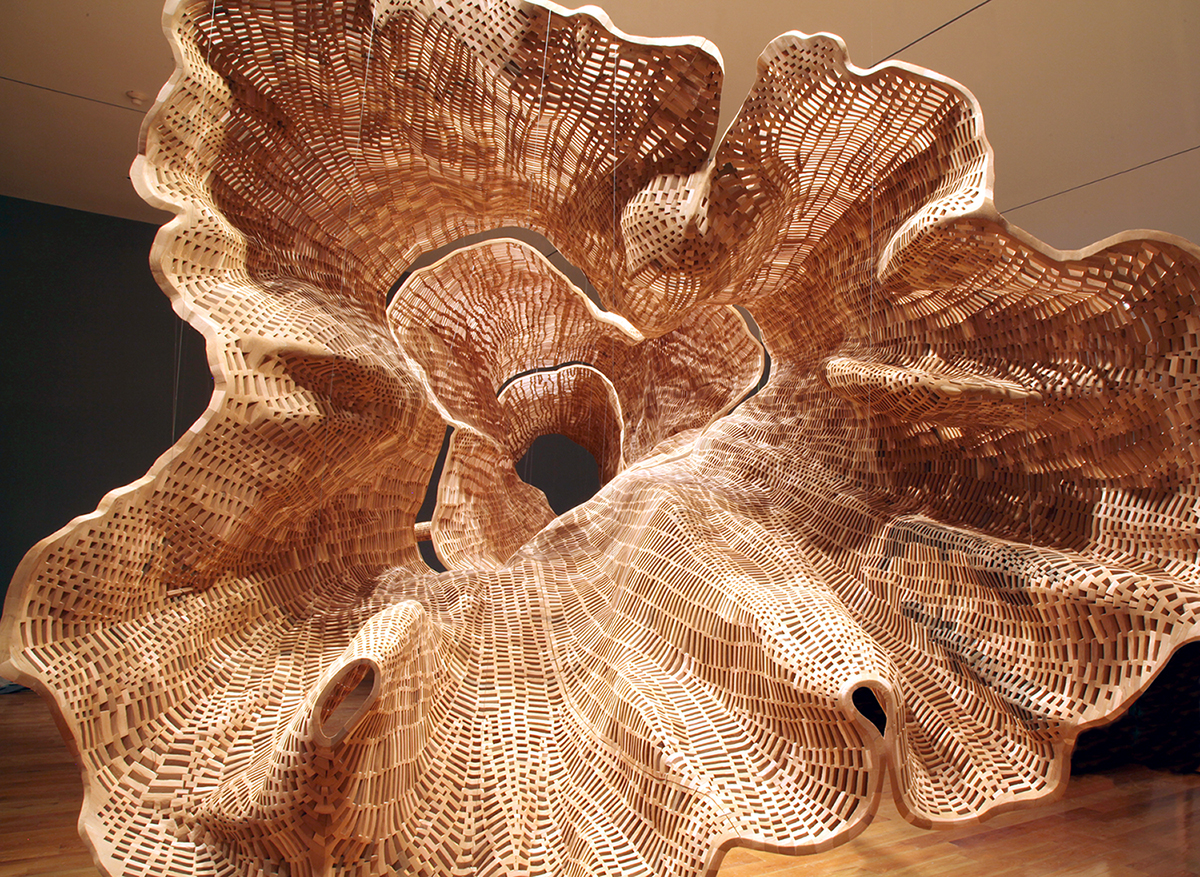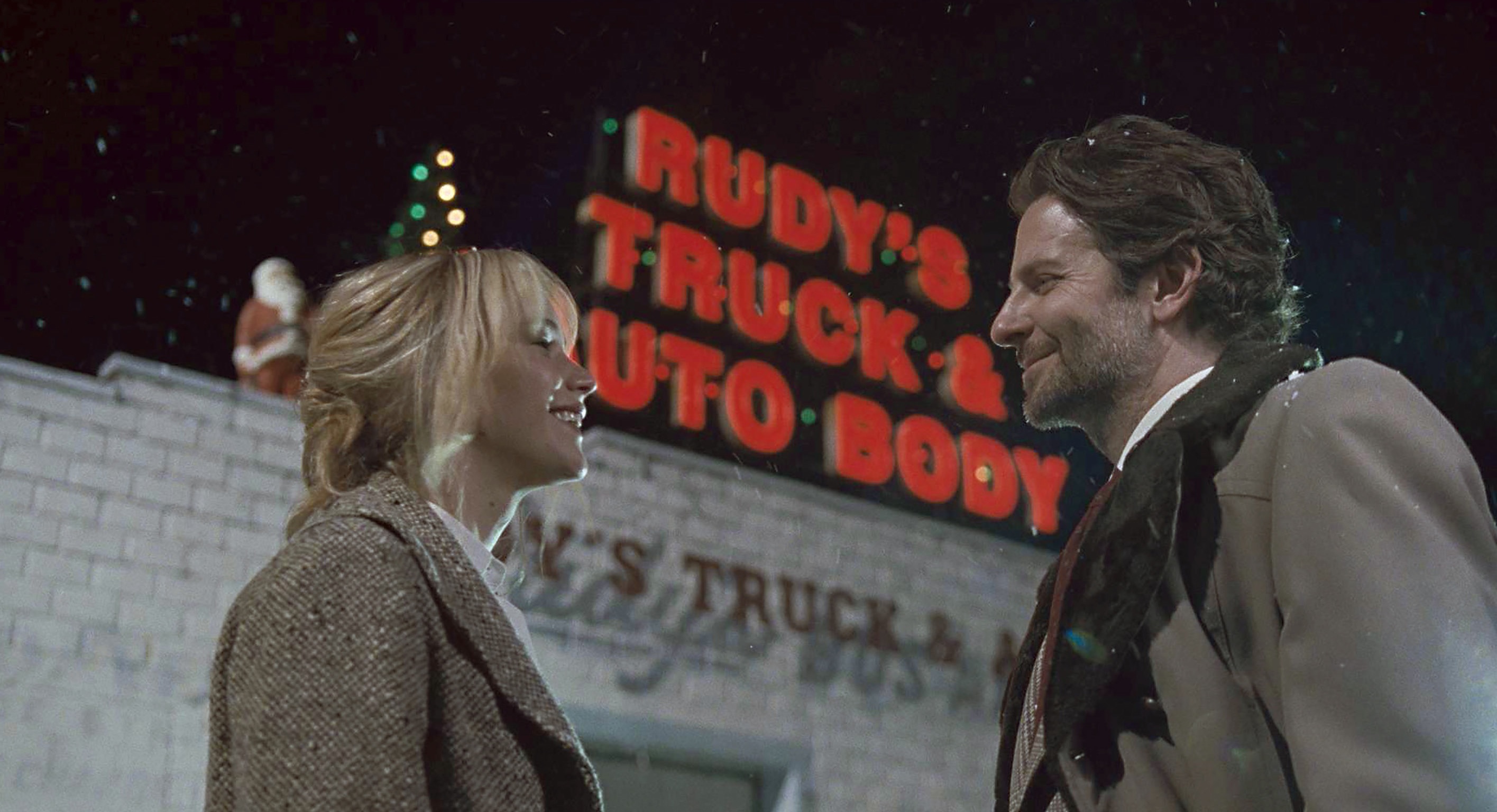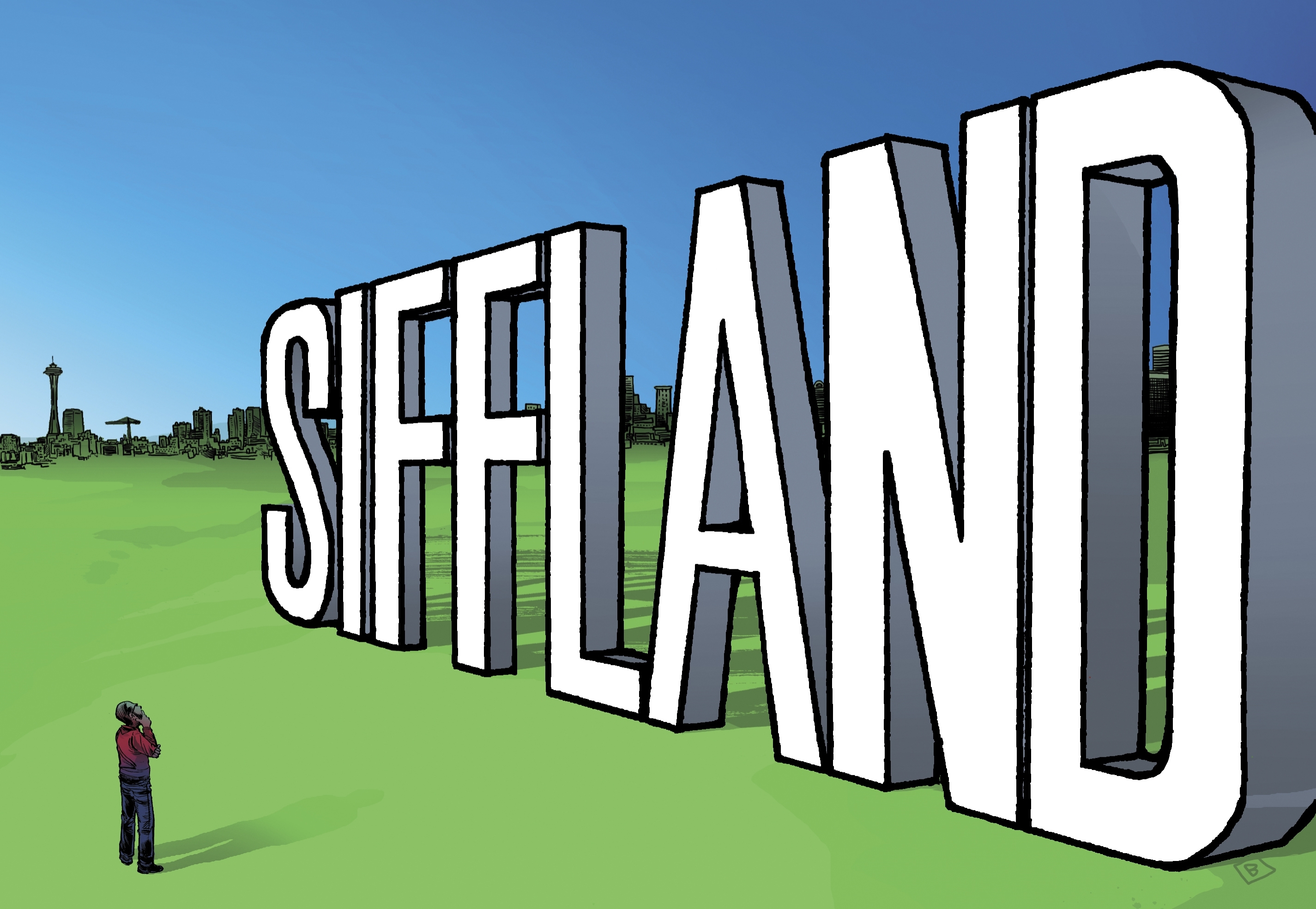John Grade has long made sculpture that reflects the history and origins of its source material (most often wood). He recently incorporated the salvaged lumber from an 1897 schooner into his towering Wawona, a work installed as the centerpiece in the atrium of MOHAI’s new home when it opened in late 2012. Now, a few blocks north, right in the heart of booming South Lake Union, he’s showing a new arboreal-inspired work that was built on site by volunteers (mostly) at MadArt, where the finished product has been on display since late January. Middle Fork, as Grade recently explained to me during a tour of the space, is both a cast, or representation, of a living tree near North Bend (and the middle fork of the Snoqualmie River) and a clever repurposing of discards from his South Seattle studio.
The tree in question is a 140-year-old Western hemlock. Middle Fork is a three-dimensional lattice made of little cedar blocks—like units of time, their thickness corresponds to the tree’s annual growth ring. There’s a translation at work here, from one wooden medium to another. “All the cedar is scrap. It’s this mongrel project,” says Grade, an ever-friendly and outdoorsy-looking fellow with public-art commissions all over the Northwest (and increasingly beyond). MadArt approached him, says Grade, who had no prior notion for a sculpture before viewing the expansive, pedestrian-oriented space. “It’s the interaction with the public” that drew him, he says. “That was the compelling thing for me—can we really pull them off the street to participate?”
The MadArt space was thus inaugurated last year as Grade’s workshop for Middle Fork, its prominent storefront location intended to attract volunteers—as it did, more than 100 of them, contributing thousands of hours of labor, according to MadArt director Tim Detweiler. The 3,400-square-foot space was originally a Nash automobile dealership during the ’20s; today, though not technically a gallery, the place is somewhat reminiscent of Suyama Space or the now-closed Western Bridge. It’s well-suited to large, ambitious artworks, though MadArt—until recently known for its temporary public art installations—has more of an interactive mission. Founded by Alison Milliman (also the building’s owner), MadArt’s stated goal “is to support emerging artists in our community, to bring art into our lives in unexpected ways, and to create community involvement in the arts.” In other words, passive art-gazing isn’t the objective. (Detweiler says plans for a second show—or call it what you will—are currently underway for summer.)
However, before the tiny little cedar blocks could be sanded and assembled into Middle Fork’s sectioned, horizontally suspended carapace, there was the fieldwork: the actual casting of the hemlock. Dangerous and messy, this job was undertaken by Grade himself with a small crew, no volunteers. Using tree-climbing rigs, the artist and his helpers wrapped the tree in foil, then plaster, and later cut away the hardened molds for the future re-creation of a 40-foot section (roughly the tree’s lower half).
It was an arduous job, documented in a short video playing at MadArt. Why not use lasers instead? “It would’ve been easier!,” Grade laughs. “We could scan this. We could’ve [3-D] printed the sculpture, and it would’ve been no one but me.” But the point is of course to be more labor intensive and to enlist the community for that labor. Grade or his assistants were often in the MadArt workshop to supervise volunteers, he adds. (As he and I chat, one proud former volunteer is leading a small party to inspect his handiwork. And other viewers are indeed wandering in from the sidewalk—the time being about lunch hour.) You very much get the sense in talking to him that Grade, unlike some artists, doesn’t want to be a solitary guy at the easel or keyboard.
“We make these assumptions about people who walk on these streets,” says Grade, referring to the stereotype that the average tech or Amazon worker isn’t interested in art (or more likely has no time for art). Yet “the majority of people who participated came in off the street.” (Detweiler is certain a few came from Amazon, but volunteers weren’t filling out employment forms.) More to the point, says Grade, a guy accustomed to creating with his hands, “This is such a tangible thing. I think that’s pretty meaningful” for the code-writing crowd.
Why did he choose and cast this particular hemlock? He liked the shape and the limb pattern, its burls and imperfections. “The tree ended up being special. It’s got that story,” he says. Grade wanted to avoid the solitary “romantic, beautiful” tree you might see on a wall calendar. This one is a little battle-scarred and misshapen, as he prefers. It’s base is misshapen by rot (and its early years sprouting from a nurse log), then the century and a half of varying weather, the seasons, and all the stresses recorded annually on its growth rings. Unlike this region’s old-growth titans, exported in the late 19th century for ship’s masts and every other commercial purpose, “This is a tree that would be a junk tree 100 years ago. This is wood that survived because it wasn’t valuable.” The grain and strength of hemlock didn’t compare to Douglas fir and other native trees we so relentlessly cut and milled (the old ship Wawona being one such beneficiary). And, Grade notes, “There’s a nice little conversation going on” between Wawona and Middle Fork—two uses of wood, though bound for different fates.
After Middle Fork visits the Smithsonian (this fall), London, and beyond, Grade explains, it’ll return to the Northwest in a few years to be recycled at the original hemlock site—where, barring a forest fire, that tree will still be standing. Since his art often deals with the environment and notions of decay, Grade has previously planted pieces out in the open to let them weather. Some are permanent and others not. With Middle Fork, however, “This is the first time I’ll return it to the starting place.” There, a short walk from a logging road (on private land), the sculpture will gradually decompose, feeding the forest floor and its ecosystem. Grade envisions periodic art tours to inspect both the source tree and its crumbling representation. “I have no idea how long it’ll take to degrade,” he says—savoring the pun on his name (actually pronounced “Grah-day,” as if with an accent on the second syllable.)
By then, of course, the source tree will be taller and will have added a few more growth rings, its history likely to continue far beyond Middle Fork’s short lifecycle.
bmiller@seattleweekly.com
MADART 325 Westlake Ave., N., 623-1180, madartseattle.com. Free. 11 a.m.–5 p.m. Wed. & Fri.–Sat., 11 a.m.–7 p.m. Thurs. Ends April 25. Grade will give a talk at 2 p.m. Sun., March 1.








